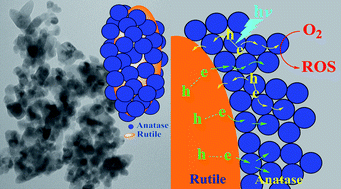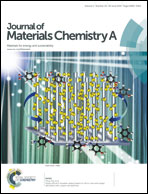Synthesis of TiO2 with controllable ratio of anatase to rutile†
Abstract
Dual-phase TiO2 photocatalysts with controllable ratio of anatase to rutile were synthesized, and evaluated using the degradation of Rhodamine B (RhB) under UV light irradiation. The TiO2 samples prepared by one-pot redox reactions in the presence of graphene oxide (GO) were characterized by X-ray diffraction, physical adsorption–desorption of nitrogen, and scanning/transmission electron microscope techniques. Results showed that the weight percentage of anatase and rutile in the resulting TiO2 samples linearly changed with the starting mass ratio of TiCl3 over GO (RTiCl3/GO). The formed reduced GO (rGO) was completely removed by calcination at 450 °C, leaving behind pure crystallized TiO2 materials. The two-dimensional rGO sheet inhibited the aggregation of TiO2 nanoparticles, and the oxygen functional groups benefitted the formation of the anatase phase especially at low RTiCl3/GO. TiO2 with 55% of anatase and 45% of rutile displayed the highest photoactivity due to its unique hierarchical structures, including anisotropically shaped structure of rutile nanorods, intimate interfacial contact between anatase and rutile, and the dense interconnections among anatase particles, which retarded the electron–hole recombination and enhanced the photocatalytic performance.


 Please wait while we load your content...
Please wait while we load your content...